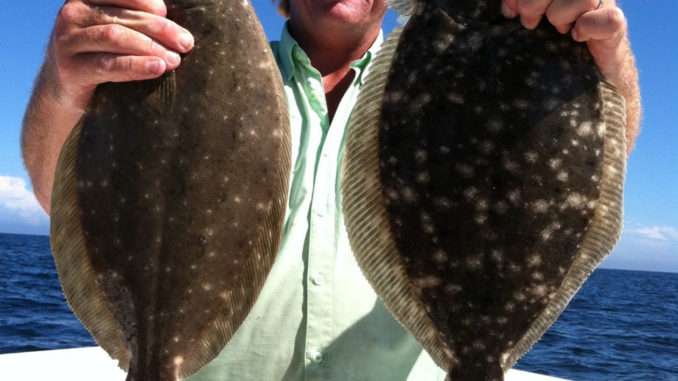
Fish the rocks this fall for a variety of targets
Cooler water on the incoming tide turns the fishing from good to great in September, and the hottest action for saltwater anglers is around jetties, submerged rock piles and reefs. And while the air remains hot, the water is definitely cooling off, and that turns on every species of fish along our coast.
Capt. J Baisch of Fishfull Thinking Charters in Murrells Inlet said this is his favorite time of year; he said September can mean bent rods all day with numerous species biting throughout the day.
“The water is definitely cooling, and the incoming tide brings better fishing than at any other time of the year because it’s bringing cooler water,” he said. “That is a relief to these fish, and turns them on big-time.”
“The tips of the jetties are excellent spots to catch bull redfish this month,” said Baisch, who targets reds with live and cut finger mullet and menhaden. “Most of the redfish caught here this month will be too big to keep, but they are plentiful, willing to bite and a blast to catch. There’s no better time or place to catch a trophy red than this month at one of our coastal jetties.”
Sheepshead anglers are also in luck this month. Fiddler crabs are the preferred bait, and these fish will be biting right up next to the same jetties. Typically, you park your boat right next to the jetties, then dangle the fiddler crabs straight down with as light a weight as necessary. Baisch said anglers need to keep their bait tight to the rocks, because the sheepshead are used to picking off barnacles and small crabs that cling to them. A bait dangling a foot away from these rocks will usually not get any attention.
Speckled trout also get turned on this month, eagerly biting a variety of baits and lures around jetties. Baisch (843-902-0356) said trolling is a great tactic, especially with MirrOlures.
“Trolling them right by those jetties gets good results,” he said.
Trolling grubs is also productive, and anglers using them should keep their speed down, starting at about .5-mph and increasing slightly until they find what the specks prefer. The specks’ cousins, weakfish, are also easy catches this month, but Baisch finds them away from the jetties. Submerged rock and debris piles that are just off the beach get his attention when targeting weakfish. Places like Area 51 near Murrells Inlet are prime examples, and any type of cut bait is good for them.
“Weakfish typically feed amongst bluefish and usually stay under them, so they are used to eating cut up bits of fish,” Baisch said.
Spanish mackerel also hang around near the jetties this month, especially the south jetty out of Murrells Inlet. Free-drifting finger mullet is an ideal tactic, and even bigger Spanish are easy targets around nearshore reefs, where finger mullet are also free-line baits.
Baisch said the flounder bite is hot, too, aided by the appearance of Gulf flounder, which show up in the fall to bolster the Southern flounder and summer flounder populations. Carolina rigs with live finger mullet will catch these fish along the jetties and around nearshore reefs. Anglers should allow their bait to sink completely, then slowly reel in, pausing periodically while feeling for a bite.
While bull redfish are some of the most sought-after fish in September, Baisch said slot-sized reds will bite in the creeks.
“Using surface lures early in the morning, especially when sunrise and high tide are within an hour or so of each other, is a fun and productive way to catch keeper redfish this month,” he said.
Anglers looking for something a little more adventurous will find swordfish willing to bite in the dark of night offshore. The Charleston Bump, which is about 100 miles offshore, holds large numbers of swordfish in the fall. They lurk deep there and often bite in 400 feet of water. Squid on circle hooks, 8 feet of 150- or 200-pound monofilament leaders and 20-ounce weights make up the business end of a swordfishing rig.





Be the first to comment